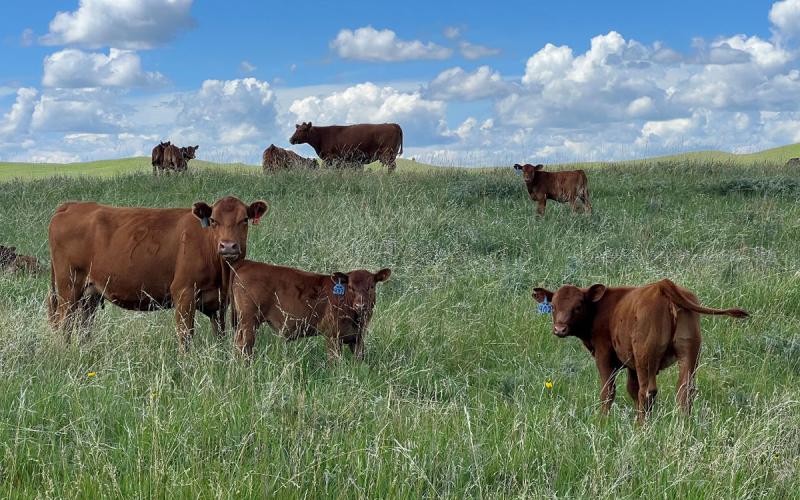Written collaboratively by Adam Varenhorst, Philip Rozeboom, Amanda Bachmann, Bradley McManus, and Patrick Wagner.
For the last few years, there have been grasshopper hotspots in eastern South Dakota. While scouting spring wheat in Brookings County this week, we noticed grasshopper nymph populations that were close to threshold. Crops in areas of the state that had high grasshopper populations during 2024 should be closely monitored for grasshopper activity. The nymphs of the two most likely pest species to observe in eastern South Dakota during this time of the season are the redlegged grasshopper (Figure 1) and the differential grasshopper (Figure 2). It’s important to remember that grasshoppers are not picky eaters, and although we observed them in wheat, they are just as likely to show up in other crops or gardens.
Redlegged Nymph

Differential Nymph

Scouting and Management

The threshold for grasshoppers feeding in wheat are 21-40 grasshoppers per square yard in the field margins or 8-14 grasshoppers per square yard within the field. Grasshoppers are considered easier to manage during the nymphal stage due to their smaller size, and problem populations should be managed before they reach adulthood. Adult grasshoppers are harder to kill, and for many insecticides require a higher rate. As a reminder, always check your product label to ensure that you are using the correct rate. In addition, we do not recommend using the lowest rate labeled for grasshopper management. To scout for grasshoppers, we recommend traveling in a horseshoe pattern and stopping approximately every 50 feet to determine the number of grasshoppers in a square yard (Figure 3). To do this, visualize an approximate square yard around your feet and simply count the number of grasshoppers present in that area. Repeat this process until you are back to the edge of the field.


